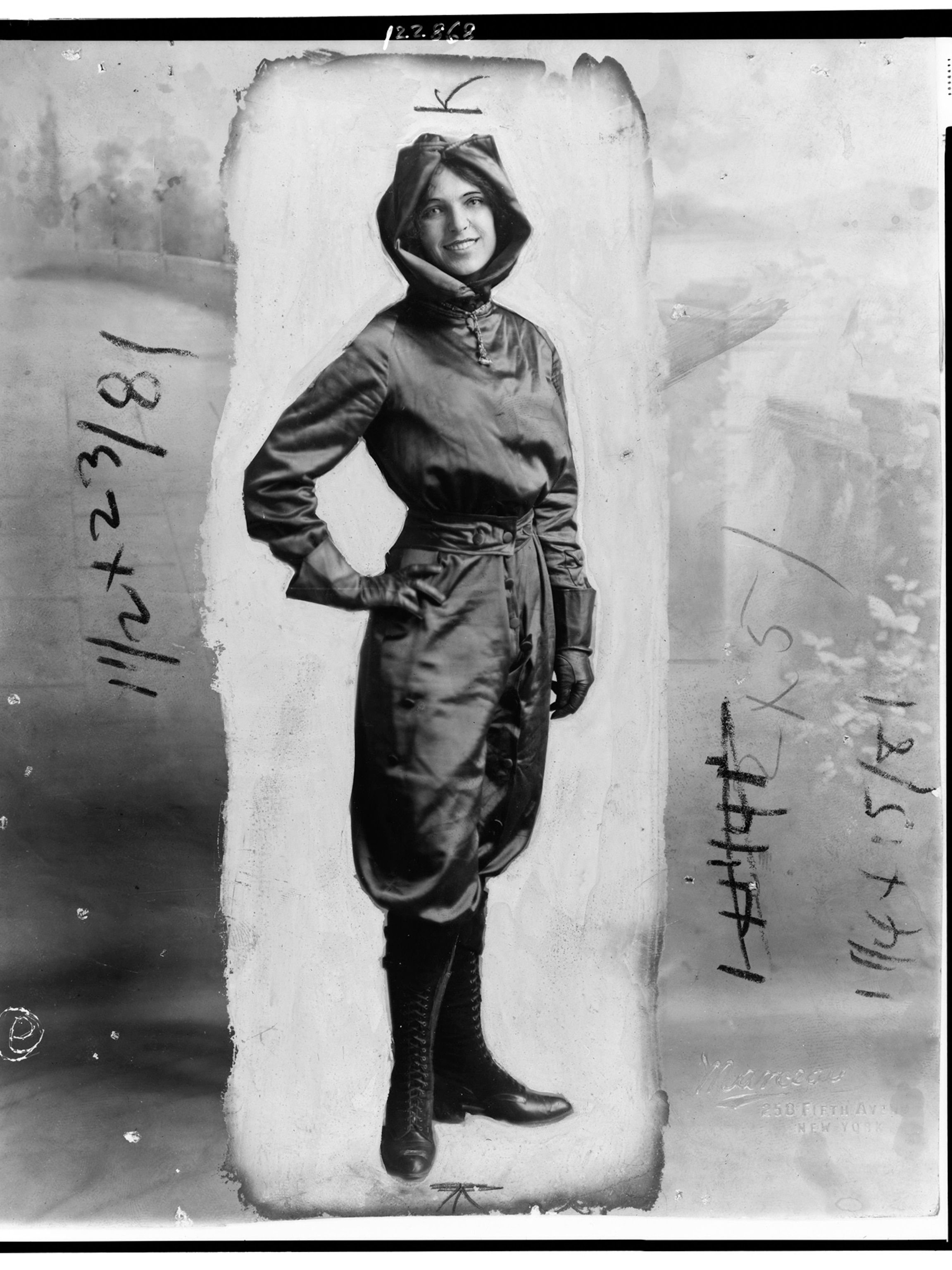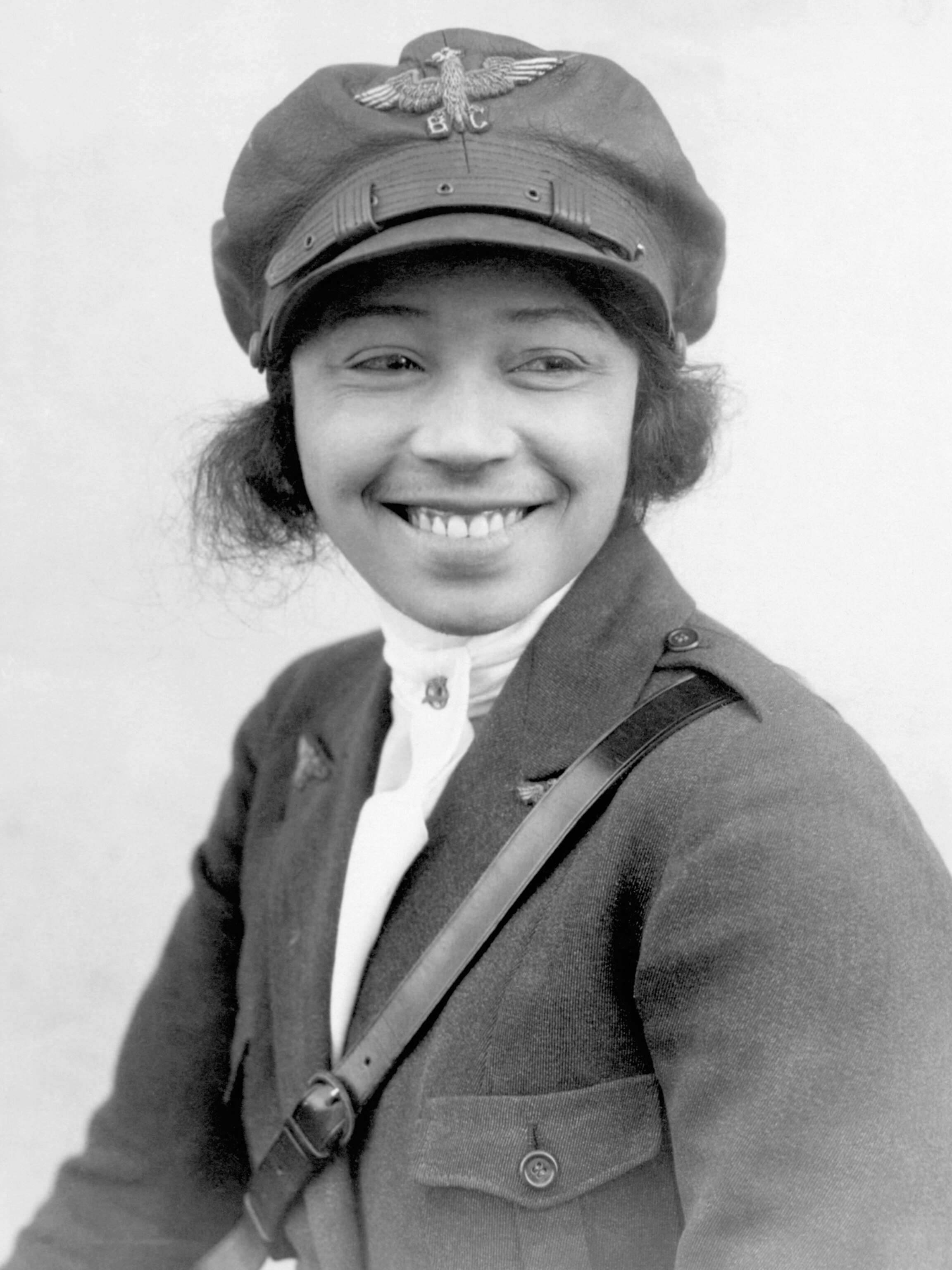Meet the women who risked everything to be the first to fly
As one female pilot wrote, "A woman who can find fulfillment in the skies will never again need to live her life in some man's spare moments."

The history of the first women who flew is a tale of breathtaking bravery and lives cut tragically short.
On March 8, 1910—113 years ago today—Raymonde de Laroche, a former Parisian stage actress, became the first licensed female pilot in the world. Nine years later she was killed when the experimental aircraft she was flying dove into the ground.
Harriet Quimby, a well-known journalist, became the first American woman to obtain a pilot’s license in 1911. She died a year later when her new plane pitched her into Boston Harbor.

In 1921, Bessie Coleman was the first Black woman to receive a pilot’s license—she had to travel to France to find a flight school that would teach her. But five years later she was killed when a wrench got caught in her plane’s controls, sending the plane plummeting.

Flying was perilous in aviation’s earliest days. The planes were “flimsy contraptions fashioned from bamboo, wire, and fabric,” according to the late historian Eileen Lebow. They didn’t have seat belts or even a roof to hold the pilot should the aircraft flip over. Yet women like Laroche, Quimby, and Coleman were willing to risk their lives for the freedom that flights promised.
“Aviation was a new profession seemingly free from the gender expectations and sex typing that limited women elsewhere,” noted historian Susan Ware at the National Air and Space Museum’s inaugural Amelia Earhart Lecture in Aviation History in 2022. “Women were getting in at the beginning.”
For many of them the thrill of flying was intoxicating but so was the opportunity to be assessed on their own merits. “These women wanted to be judged as human beings rather than as women,” says Ware.
Coleman especially saw flight as a path toward broader gender and racial equality. "I knew we had no aviators, neither men nor women, and I knew the Race needed to be represented along this most important line,” she said shortly after she returned to the United States from France in 1921. “I thought it my duty to risk my life to learn aviating and to encourage flying among men and women of the Race who are so far behind.” Before she died, she’d planned to open a flight school that would welcome African American aviators.
Many early women fliers shared the dream that achievement in this field would lead to more independence. As one journalist and amateur pilot wrote in 1930, “A woman who can find fulfillment in the skies will never again need to live her life in some man’s spare moments.”

Some of that independence would come from the ease of travel that aviation promised in its earliest incarnation. Many people, including Amelia Earhart, believed at first that airplanes would become as commonly owned by families as bicycles and automobiles already had.
(Flight attendants had to fight for their rights.)
Other women embraced the financial independence that they thought the new field would offer. Neta Snook, whose first solo flight was in a plane she rebuilt, made her living by offering up her plane for aerial advertising, test flying experimental aircraft, taking paying passengers up for aerial tours, and teaching beginning fliers, including Earhart. Gladys Roy, on the other hand, earned good money as a stunt pilot, dancing the Charleston and playing tennis on the wings midflight for amazed crowds at air shows. (Snook retired from aviation when she became pregnant in her mid-twenties and lived to be 95; Roy died at 25 when she accidentally stepped into a propeller.)


Sisters Katherine and Marjorie Stinson took a more long-term approach, establishing a flight school in Texas with their mother and brother that trained, among others, Canadian pilots in the run up to World War I. When the U.S. entered the war, the country’s civil aviation—including the Stinson School for Flying—was shut down. Katherine went to Europe to serve as an ambulance driver while Marjorie became an aeronautical draftsman for the Navy.
War and the development of commercial aviation conspired to dampen women’s hopes of equality in the air. Experienced women pilots such as LaRoche and Katherine Stinson volunteered to serve in their countries’ nascent air forces during World War I. They were denied, the military preferring to train unseasoned men. The same pattern occurred in World War II, although Women’s Airforce Service Pilots (WASPs) did ferry U.S. military planes as civilian pilots during the conflict. (The Soviet Union, however, had three female air combat regiments.)

The dream of every family owning a private plane never did materialize; the infrastructure required would have been too extensive. Instead, the commercial aviation industry developed, hiring men—many of whom had been trained as pilots by the military. It was no use pointing out, as Earhart did, that if women "had access to the training and equipment men had we could certainly do as well."
Helen Richey became the first female commercial pilot in 1934 but was hounded out of her job. The U.S. Commerce Department, under pressure from the all-male pilots’ union, decreed that women weren’t allowed to fly scheduled routes in bad weather (they’d previously considered “grounding female pilots for nine days a month during menstruation,” according to Ware).
There wouldn’t be another female commercial pilot until 1973, when Emily Howell Warner was hired by Frontier.

Related Topics
You May Also Like
Go Further
Animals
- Orangutan seen using plants to heal wound for first timeOrangutan seen using plants to heal wound for first time
- What La Palma's 'lava tubes' tell us about life on other planetsWhat La Palma's 'lava tubes' tell us about life on other planets
- This fungus turns cicadas into zombies who procreate—then dieThis fungus turns cicadas into zombies who procreate—then die
- How can we protect grizzlies from their biggest threat—trains?How can we protect grizzlies from their biggest threat—trains?
Environment
- What La Palma's 'lava tubes' tell us about life on other planetsWhat La Palma's 'lava tubes' tell us about life on other planets
- How fungi form ‘fairy rings’ and inspire superstitionsHow fungi form ‘fairy rings’ and inspire superstitions
- Your favorite foods may not taste the same in the future. Here's why.Your favorite foods may not taste the same in the future. Here's why.
- Are the Great Lakes the key to solving America’s emissions conundrum?Are the Great Lakes the key to solving America’s emissions conundrum?
- The world’s historic sites face climate change. Can Petra lead the way?The world’s historic sites face climate change. Can Petra lead the way?
History & Culture
- Meet the ruthless king who unified the Kingdom of Hawai'iMeet the ruthless king who unified the Kingdom of Hawai'i
- Hawaii's Lei Day is about so much more than flowersHawaii's Lei Day is about so much more than flowers
- When treasure hunters find artifacts, who gets to keep them?When treasure hunters find artifacts, who gets to keep them?
Science
- Why ovaries are so crucial to women’s health and longevityWhy ovaries are so crucial to women’s health and longevity
- Orangutan seen using plants to heal wound for first timeOrangutan seen using plants to heal wound for first time
Travel
- Is it possible to climb Mount Everest responsibly?Is it possible to climb Mount Everest responsibly?
- 5 of Uganda’s most magnificent national parks
- Paid Content
5 of Uganda’s most magnificent national parks - On this Croatian peninsula, traditions are securing locals' futuresOn this Croatian peninsula, traditions are securing locals' futures







